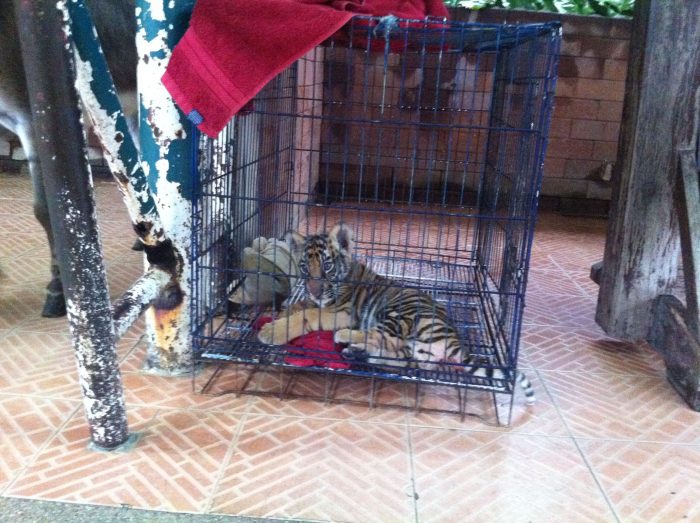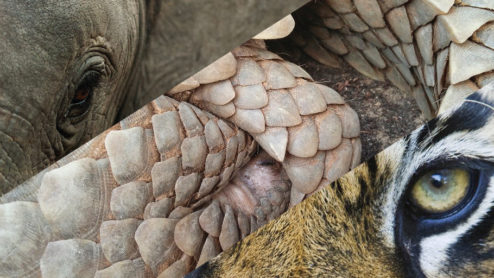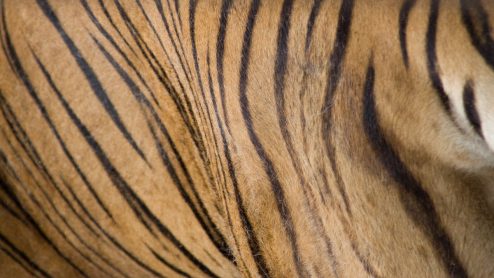International Tiger Day 2023 – the highs, lows and the challenges to giving tigers a future
As the world celebrates International Tiger Day on 29 July, we reflect on some of the highs and lows over the course of the past year and the challenges that lie ahead.
This year, the Government of India is celebrating 50 years of its Project Tiger with news that the national wild tiger population is estimated to be 3,167. In its report, the Government is, however, candid about the gaps as well as successes, noting that there are still parts of India where tigers have disappeared and that more needs to be done.
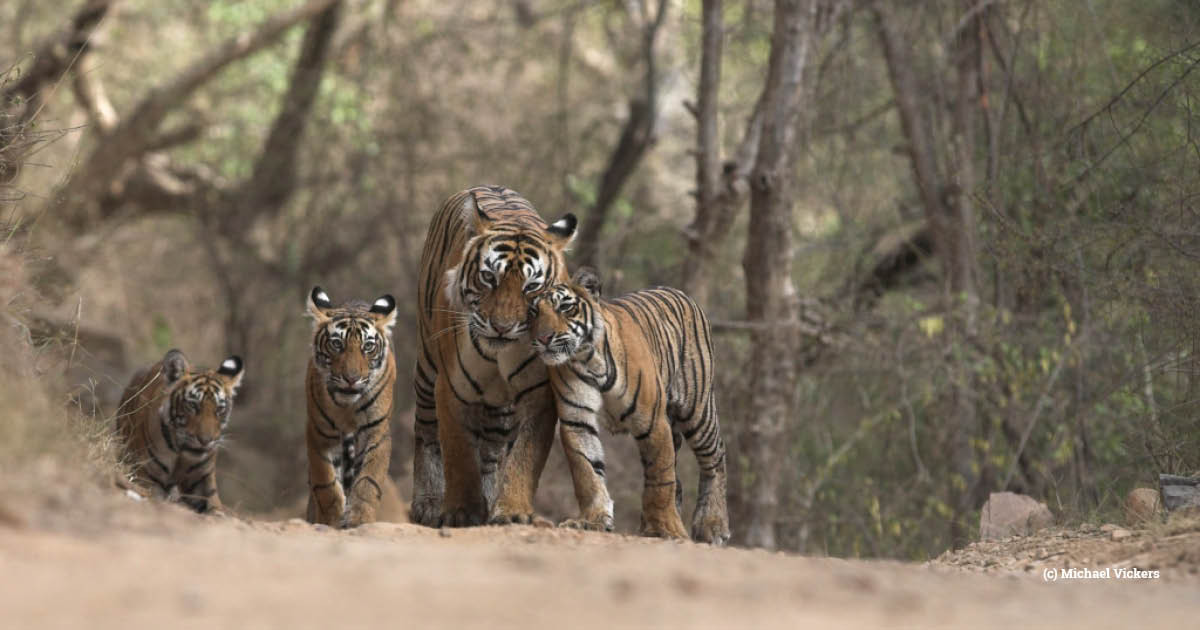
Mother and cubs in India (c) Michael Vickers
EIA’s Legal & Policy Specialist, Avinash Basker, shares his commentary on the report from India and highlights the Government’s concern that demand for tiger body parts outside the country continues to be a major threat – one that has come into sharp focus with a spate of tiger poaching and trafficking incidents being reported in recent weeks.
In 2022, we contributed to a new long-term global strategic vision to support the recovery of wild tigers, providing inputs on how to address demand-driven tiger trafficking, including trade in the body parts of farmed tigers. We have continued to work with a wide range of partners on several initiatives aimed at reducing the threat of trade to wild tigers and other big cats.
The Tackling Tiger Trafficking Framework
This comprehensive toolkit brings together in one place a range of measures and resources that governments of tiger range countries can use to counter trafficking of tigers, their parts and derivatives – including from farmed tigers.
Many of these tools draw on best practice in combating other serious crimes, such as human, weapons and drugs trafficking. Their application would have impact beyond tigers, countering trafficking in other threatened wildlife species.
Along with the other 11 NGOs we worked with on the toolkit, we will continue to provide information to support national and international cooperation, while advocating for greater political will to use these tools.
Investigating tiger trade
Funded by the UK Government though the Illegal Wildlife Trade Challenge Fund, EIA has partnered with Education for Nature Vietnam (ENV) and Wildlife Friends Foundation Thailand (WFFT) to gather and analyse information on the criminal enterprises and networks that are trafficking tigers along the Mekong-China route, including from ‘farmed’ tiger parts and derivatives.
The information is being shared with law enforcement agencies to inform their operations and is being used to encourage policy-makers to strengthen national laws and more effectively implement the Resolutions and Decisions of the Convention on International Trade in Endangered Species (CITES).
The project covers Thailand, where WFFT has been monitoring the status of captive tigers across the country. Its latest assessment is that there are more than 1,600 tigers in captivity, more than the Government’s official assessment. Many of these are in facilities that are breeding tigers without a license, claiming to be zoos but which are not open to the public and are leaking tigers into illegal trade.
WFFT has been reporting these facilities of concern to the authorities and has also reported the ongoing sale of tiger bone glue at one of these tiger parks. It has been asked by the Government to assist with the rescue of tigers and leopards from one tiger farm that was recently closed down due to illegal activity.
From Thailand, tiger parts are trafficked to Myanmar, where EIA has identified prolific online traders servicing buyers from China, and to Laos, where we have uncovered a tiger bone winery in the capital Vientiane. Live tigers are also trafficked from Thailand to Laos, either to stock the persistent tiger farming operations there or to be routed directly to Vietnam.
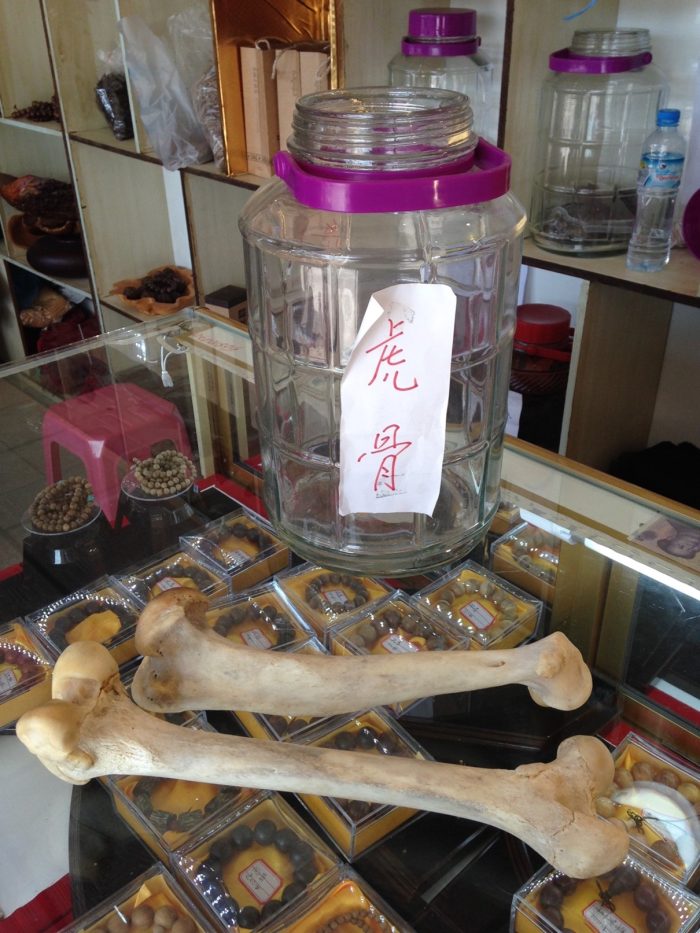
Tiger bone for sale in Vientiane, Laos – EIA, ENV and WFFT have documented trade in tiger bone in the Mekong, used to make bone wine and bone glue (c) EIA
We have consistently alerted the CITES Secretariat and members of the CITES Standing Committee, the body which can recommend CITES trade suspensions, to the role played by criminal enterprises which have continued farming and trading tigers in Laos for several years.
We know from our recent research that these entities continue to operate with impunity and the time for trade suspensions against Laos is long overdue. Our review of Laos’ draft legislation and CITES decree, a requirement to avoid CITES trade suspensions, reveals a framework still full of loopholes and ambiguities inadequate to the task of implementing CITES or preventing tiger farming. It remains to be seen whether any improvements have been made as the law emerges from the National Assembly July 2023 deliberations.
In Vietnam, ENV has continued to support national authorities with information about tiger trade that has assisted agencies in their operations. This includes cases where the tiger parts have been smuggled across from Laos and cases where significant Vietnamese traders in tiger and other wildlife have been arrested.

A tiger facility that was started with illegally obtained tigers has recently closed in Vietnam (c) EIA
ENV has also been monitoring and reporting on the status of captive tigers and trade in farmed tigers in Vietnam since 2009, where there are currently 17 private facilities keeping tigers, six of which have long been considered facilities of concern. Two facilities, one with seven tigers and one with six, have recently closed; another has ceased illegal operations after the owner was arrested for illegal wildlife trade, but action is still required to stop the others.
To address the problem in the long-term, ENV is also advising relevant Ministries in Vietnam on regulations to prevent the growth of large captive tiger populations.
Information about the status and location of captive tigers has been used to create a new map, highlighting the facilities of concern, including in China where the recent opportunity to amend the Wildlife Protection Law to prohibit tiger farming and the domestic trade in skins of captive-bred tigers was squandered.
Many of these issues will be addressed at the 77th Meeting of the CITES Standing Committee in November 2023, where we will join with NGO colleagues to campaign for time-bound action to follow from the CITES Tiger Missions and CITES Big Cats Task Force.

